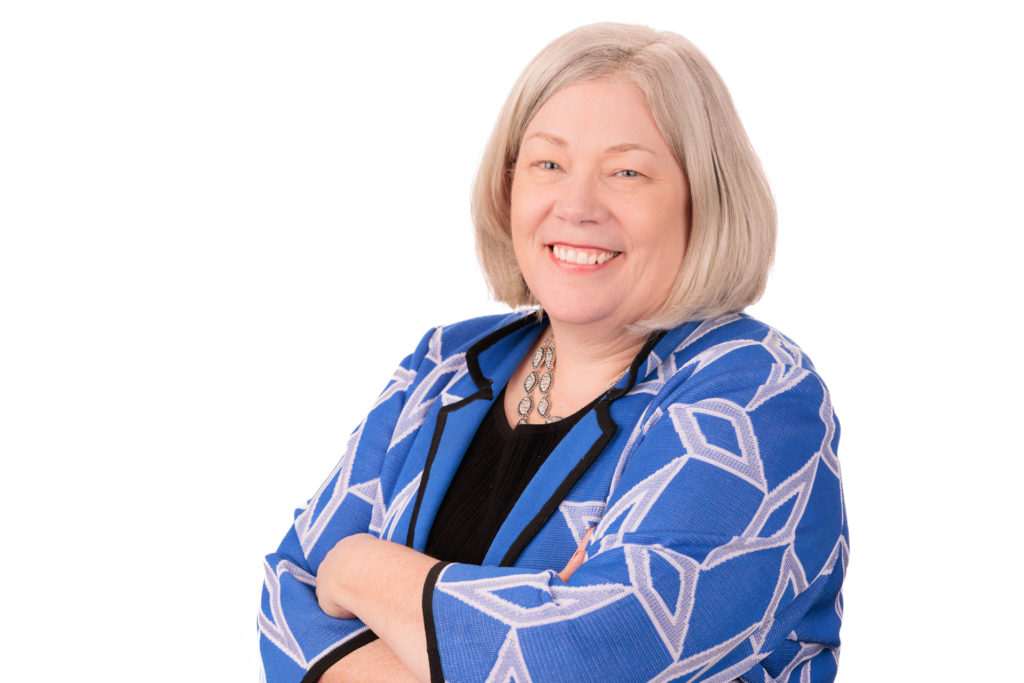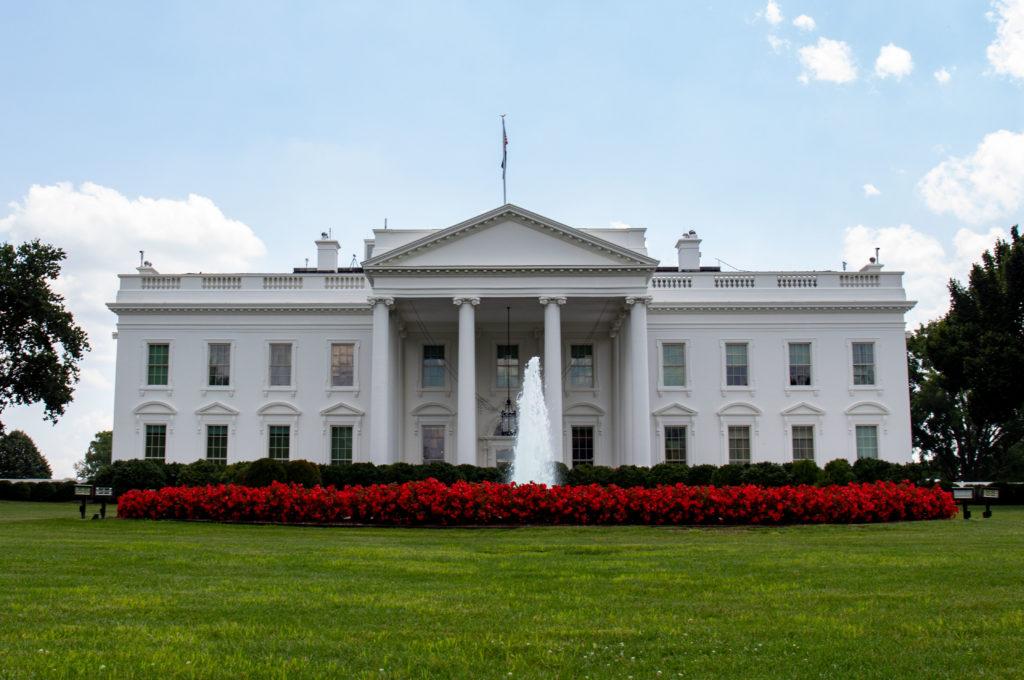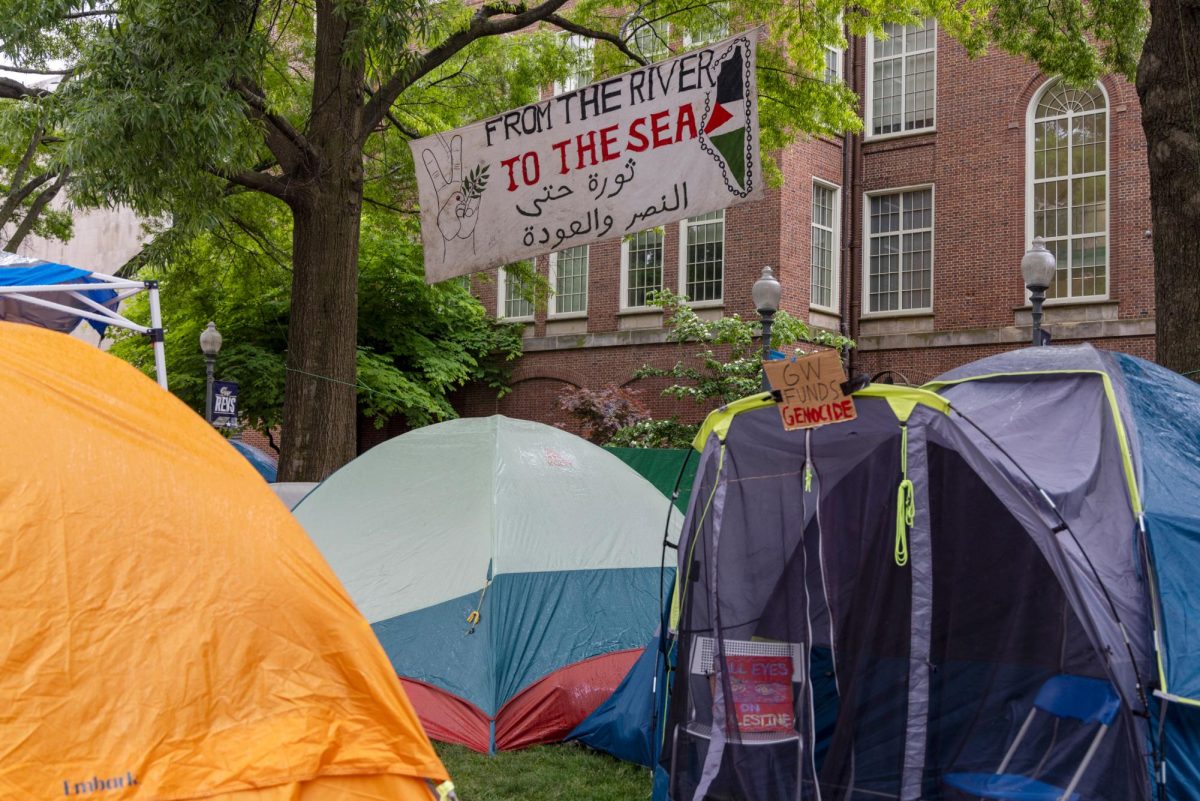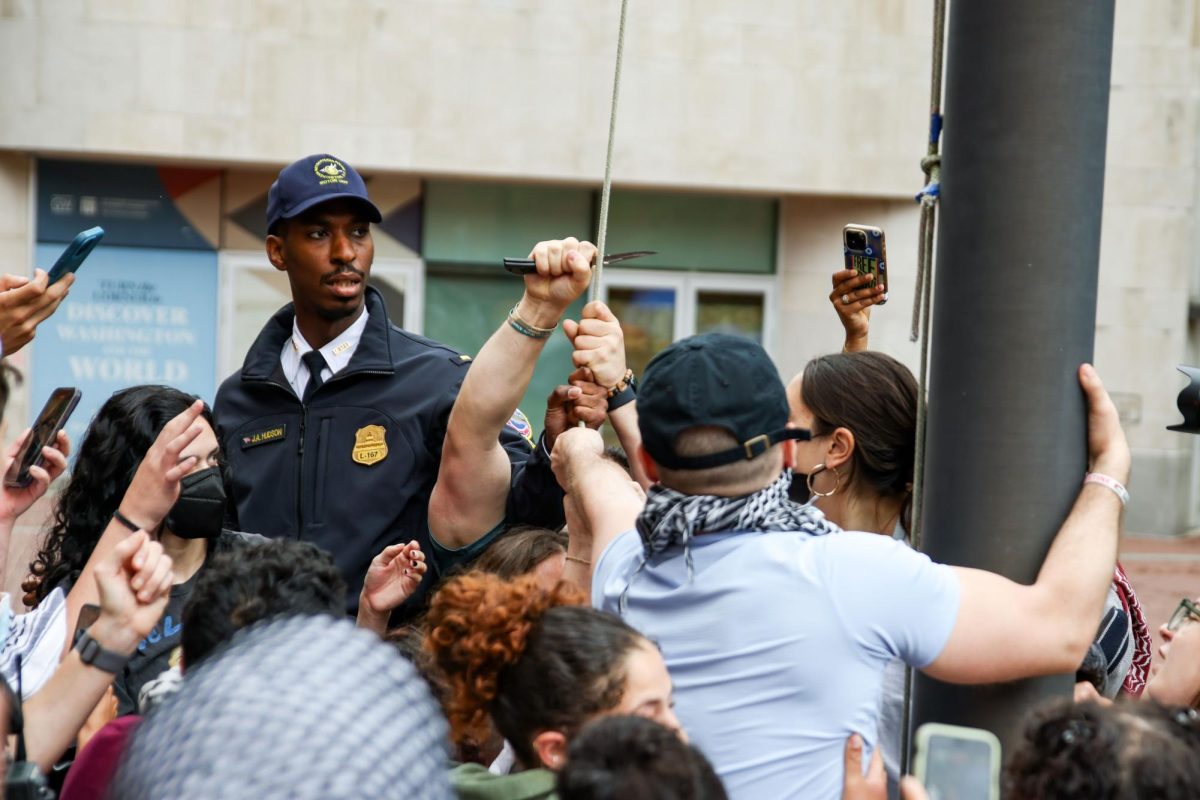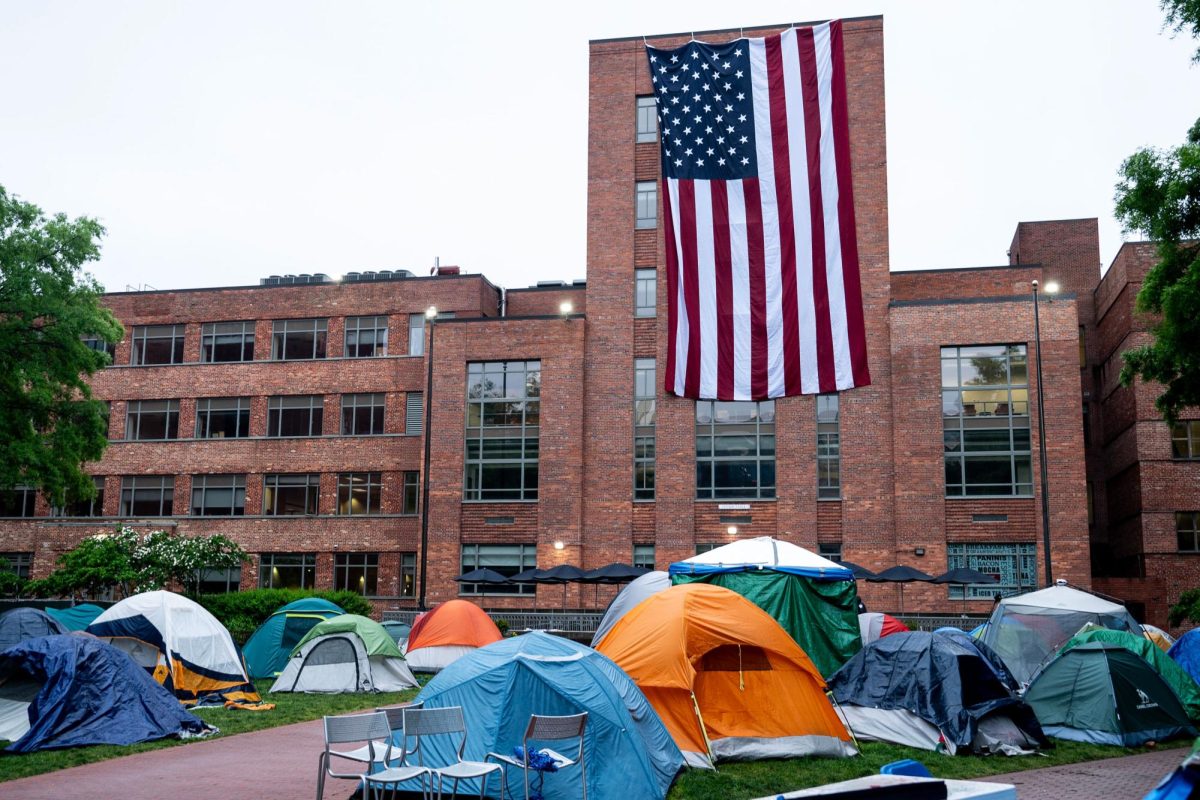Experts in higher education administration said incoming University President Ellen Granberg can usher in a “cultural shift” at GW and develop external partnerships across D.C.
At a public event in the Jack Morton Auditorium Wednesday, officials introduced Granberg – the provost and senior vice president for academic affairs at Rochester Institute of Technology – who will take over as GW’s first female president starting in July. Experts in higher education administration said new presidents often rebrand a university with their own set of personal values, and GW could shake up its financial priorities with greater investment in campus facilities and research initiatives as a result of the transition to Granberg’s leadership.
During her tenure at RIT and Clemson University, Granberg led diversity, equity and inclusion efforts to close achievement gaps between students who are Black, Indigenous and people of color and non-BIPOC students and supported faculty and staff through shared governance, according to a University release.
Mark Stern, an associate professor of educational studies at Colgate University, said presidential priorities can materialize into fundraising for new buildings like residence halls or gymnasiums depending on the preferences of the president. He said introducing new presidents can reshape an administration’s values, which will be visible through how they address students, staff and faculty.
“They each have a certain kind of rhetoric that they bring with them,” Stern said. “And that rhetoric can be about excellence, diversity, equity and inclusion, research and so on. So you begin to feel like the school is getting a little bit of a rebranding.”
Stern said university presidents have typically tried to bring out students’ strengths in the past, but since smaller boards have started managing the hiring of presidents over the past 50 years, their role has shifted to ensure their institution remains “fiscally viable.”
Trustee and alumna Roslyn Brock and Faculty Senate Executive Committee Chair James Tielsch led the 17-member committee’s search for a new president, which included nine members from the Board of Trustees, five faculty, one staff member and the respective presidents of the Alumni Association and the Student Association. Officials hired Education Executives, a national higher education consulting firm, in June to collect input from the GW community, create a presidential profile and develop an application process for the role of University president.
“A lot of what they do today is set an agenda,” Stern said. “They hire people to enact that agenda, and they are there to make sure the institution remains fiscally viable.”
Michelle Boettcher, a professor of higher education student affairs at Clemson University, said as universities undergo leadership changes, new presidents must create and foster relationships on campus with students and off campus with “key partners” like government legislators. She said bringing in partners with different expertise, like crisis management or academic excellence, can help build an administrative team that can excel in all areas.
She said the issues that president-elect Granberg must prioritize might include “urgent” necessities like improvements to campus safety or infrastructure, depending on the needs of the University at the time of her transition.
Officials developed a list of academic priorities in September, including academic medicine, equity and social justice, data science and sustainability and climate change and invested $50 million in 14 new, endowed professorships to bolster GW’s medical enterprise. But faculty senators said the new priorities are not unique to GW, and officials should focus on improving academics across all schools and departments, not just the STEM-related academics.
“If there is a crisis or some emerging issues that the incoming president is going to have to kind of hit the ground running once they start, no matter how much you read about a place or how much you talk to people about an institution, until you’re there, you can’t really fully learn it,” Boettcher said.
Boettcher said some university presidents started leaving their positions in 2020 due to numerous factors like COVID-19 and a divisive political climate, which pressured others to decide if they wanted to continue working in academia. She said the expectation is that presidents not only exert strong communication and management skills but can also navigate public image concerns, enrollment shifts and partnerships with different stakeholder groups like alumni, donors and external businesses.
Former University President Thomas LeBlanc oversaw the extension of the Disney Institute partnership in February 2019, a source of tension from faculty and students who said the partnership’s price tag, which officials have repeatedly declined to make public after disclosing an initial $300,000 allotment, could have been better spent on reducing costs like housing or dining.
“We really are asking a lot of our leaders, and I think the ideal leader is someone who has some of those skills and knows how to build,” Boettcher said. “There are people out there who are smart, strategic thinkers who can build teams to achieve in all of those areas.”
Boettcher said she felt “inspired” by Granberg’s more than two decades at Clemson, where she served as senior associate provost, sociology professor, department chair and associate provost for faculty affairs. She said Granberg led a panel on navigating the promotion process for professors when Boettcher was a new faculty member and reassured her that she wanted Boettcher and other new faculty to be successful at the university.
“Her generosity with time and advice was an important part of how I began to see myself as a faculty member, but more importantly, how I saw myself as a part of a university community that was invested in, supportive of and welcoming to me,” Boettcher said. “What she said has been a source of support I have recalled throughout my time at Clemson University.”
John Broderick, the president emeritus of Old Dominion University, said new presidents often spend much time getting to know faculty, students and staff on campus to get ready to work with and serve their community. Broderick said incoming presidents pay a significant amount of time understanding the issues and standing of the university as they prepare to join the administration.
Interim University President Mark Wrighton spent the first days of his term last January meeting with senior administrators, trustees, faculty leaders and D.C. government officials like Mayor Muriel Bowser for introductions and discussions on the pandemic.
“Could be three months, or six months or up to a year, but there is a timeline people will spend trying to get a better understanding of and ensure that they have a good knowledge base of the various constituencies that a president has to work with, and they are numerous,” Broderick said.
Eóighan Noonan contributed reporting.


